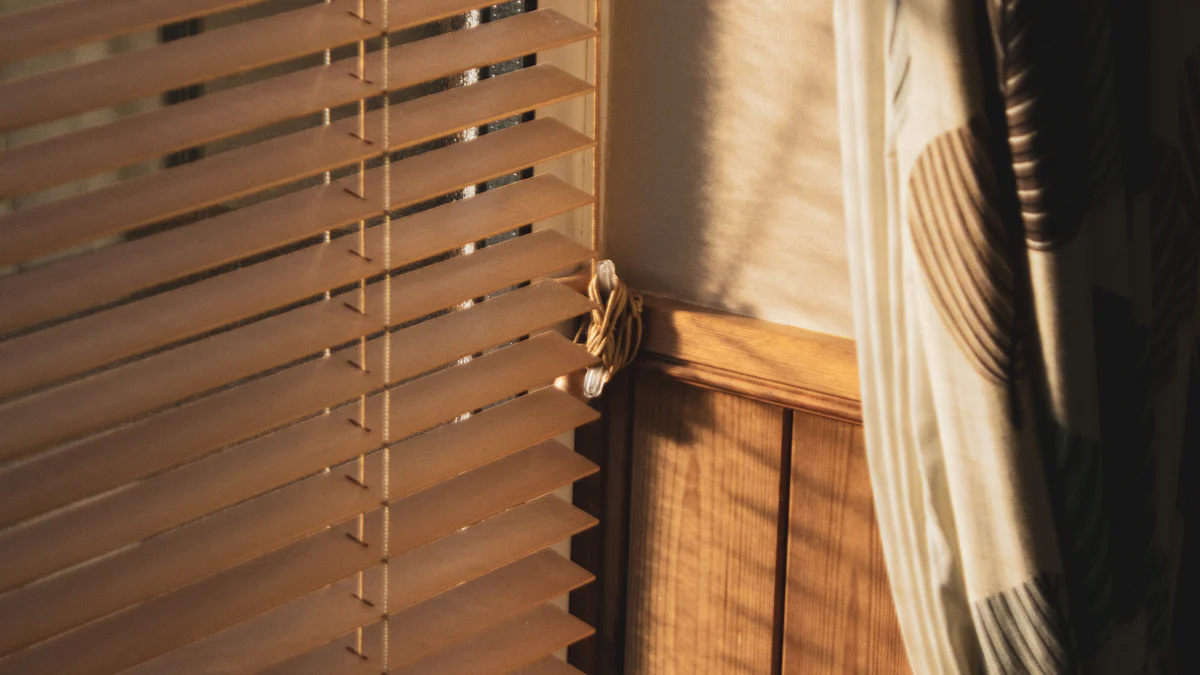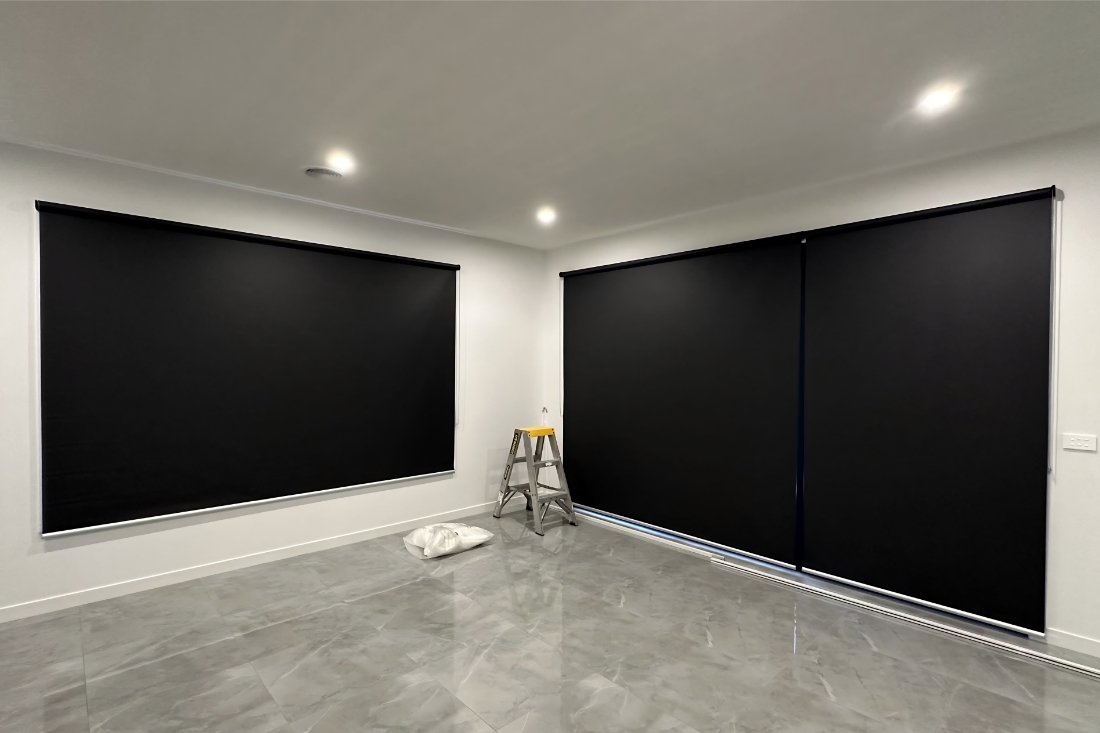No products in the cart.

Accurate measurement is crucial when you fit window blinds. You must measure your windows precisely to ensure a perfect fit. This step determines whether you choose inside mount blinds or opt for an outside mount. Inside mount blinds offer a sleek look by fitting within the window frame, while outside mounts cover the entire window, providing more light control and privacy. Different types of blinds, such as wood, faux wood, and aluminium, have unique installation needs. Understanding these requirements helps in fitting window blinds effectively, ensuring they enhance your space beautifully.
Key Takeaways
- Accurate measurements are essential for a perfect fit; use a measuring tape to determine the width and height of your windows.
- Gather the right tools, including a drill, screwdriver, and level, to ensure a smooth and efficient installation process.
- Choose between inside and outside mount blinds based on your aesthetic preference and desired light control.
- Follow a step-by-step guide for each type of blind—Venetian, roller, or vertical—to achieve a professional finish.
- Prioritise safety by opting for cordless blinds or using cord cleats and tension devices to keep cords out of reach of children.
- Regularly check and adjust your blinds for alignment and length to maintain their functionality and appearance.
- Consider hiring a professional if you encounter difficulties during installation to ensure a flawless result.
Tools and Materials Required for Fitting Window Blinds

When you embark on the journey of fitting window blinds, having the right tools and materials is essential. This ensures a smooth installation process and guarantees that your blinds function properly.
Essential Tools
To begin with, you need a set of essential tools:
- Measuring Tape: Accurate measurements are crucial. A measuring tape helps you determine the exact dimensions of your window, ensuring a perfect fit for your blinds.
- Drill and Drill Bits: A cordless drill with various drill bits is indispensable. It allows you to create holes for screws and brackets, making the installation process efficient and straightforward.
- Screwdriver: This tool is necessary for securing screws firmly. It ensures that your blinds remain stable and do not sag over time.
- Level: A level is vital to ensure that your blinds are mounted straight. This tool helps you avoid crooked installations, which can affect the functionality and appearance of your blinds.
Necessary Materials
In addition to tools, certain materials are required for a successful installation:
- Blinds Kit: This kit typically includes the blinds themselves, along with essential components like the headrail and wand for operation.
- Screws and Brackets: These come with your blinds and are crucial for securing them in place. They provide the stability needed to prevent the blinds from falling.
- Wall Anchors (if needed): For outside mount blinds, wall anchors may be necessary. They offer additional support, especially if the wall material is not sturdy enough to hold the screws alone.
With these tools and materials at your disposal, you are well-equipped to install your window blinds effectively. Whether you’re fitting roller blinds or another type, having the right equipment ensures a seamless and successful installation.
Step-by-Step Guide to Install Window Blinds
Installing window blinds can transform your space, providing both functionality and style. This step-by-step installation guide will walk you through the process of fitting different types of blinds, ensuring a seamless experience.
How to Install Venetian Blinds
Venetian blinds add a touch of elegance to any room. Here’s how to install venetian blinds effectively:
Measuring the window
- Use a measuring tape to measure the width and height of your window. Ensure accuracy to fit window blinds perfectly.
- Record the measurements, considering whether you want an inside or outside mount.
Marking the bracket positions
- Hold the brackets against the window frame or wall where you plan to install venetian blinds.
- Use a pencil to mark the screw holes for precise placement.
Drilling and attaching brackets
- Drill pilot holes at the marked positions to make it easier to insert screws.
- Secure the brackets with screws, ensuring they are level and sturdy.
Hanging the blinds
- Slide the headrail of the venetian blinds into the brackets.
- Close the bracket covers to secure the headrail in place.
- Attach the wand to the metal clip on the headrail for easy operation.
How to Fit Roller Blinds
Roller blinds offer a sleek and modern look. Follow these steps to install roller blinds:
Measuring for roller blinds
- Measure the width and drop of your window to determine the size of the roller blinds.
- Consider adding extra width for better light control and privacy.
Attaching the brackets
- Position the brackets at the top of the window frame or wall.
- Mark the screw holes and drill pilot holes.
- Secure the brackets with screws, ensuring they are level.
Mounting the roller blind
- Insert the roller blind into the brackets.
- Ensure the blind is centred and rolls smoothly.
How to Install Vertical Blinds
Vertical blinds are ideal for large windows and sliding doors. Here’s how to install vertical blinds:
Measuring for vertical blinds
- Measure the width and height of your window or door.
- Consider the length of the vertical blind track for optimal coverage.
Installing the headrail
- Position the headrail at the top of the window or door.
- Mark the screw holes and drill pilot holes.
- Secure the headrail with screws, ensuring it is level.
Attaching the slats
- Hang each slat onto the vertical blind track.
- Ensure the slats are evenly spaced and can rotate freely.
By following this step-by-step installation guide, you can confidently install window blinds in your home. Whether you choose to install venetian blinds, roller blinds, or vertical blinds, these instructions will help you achieve a professional finish.
Also learn: how to put curtains over blinds
Common Adjustments and Troubleshooting for Fitting Window Blinds
When you fit window blinds, you might encounter some common issues that require adjustments. Understanding how to address these problems ensures your blinds function smoothly and look great.
Adjusting Blind Length
Sometimes, the length of your blinds may not suit your window perfectly. You can easily adjust them to achieve the desired fit.
Shortening blinds
- Remove the blinds from the brackets and lay them flat on a surface.
- Measure the desired length and mark it on the blinds.
- Cut the excess slats using a sharp tool, ensuring a clean cut.
- Reattach the bottom rail and secure it with the end caps.
Extending blinds
- Purchase additional slats that match your existing blinds.
- Remove the bottom rail and slide in the new slats.
- Reattach the bottom rail and ensure all slats are evenly spaced.
Fixing Misaligned Blinds
Misalignment can affect the appearance and functionality of your blinds. Addressing this issue promptly is crucial.
Realigning slats
- Check the slats for any obstructions or dirt that might block their movement.
- Gently adjust each slat to ensure they hang straight and rotate smoothly.
- Test the tilt function to confirm the slats align properly.
Adjusting brackets
- Inspect the brackets to ensure they are level and securely attached.
- Use a spirit level to check the alignment of the brackets.
- Loosen the screws slightly and adjust the brackets if necessary.
- Tighten the screws once the brackets are correctly aligned.
By following these steps, you can effectively troubleshoot and adjust your window blinds. Ensuring your blinds are properly aligned and the correct length will enhance their functionality and aesthetic appeal.
Safety Considerations When You Install Window Blinds
When you install window blinds, prioritising safety is crucial, especially if children are present in your home. Window blind cords pose significant risks, and understanding how to mitigate these dangers is essential.
Child Safety
Ensuring child safety involves taking proactive steps to eliminate potential hazards associated with window blinds. Here are some key considerations:
Installing Safety Devices
- Opt for Cordless Blinds: Cordless blinds are highly recommended for homes with children. They eliminate the risk of entanglement, providing a safer environment. Studies have shown that cordless blinds significantly reduce the likelihood of injuries related to window coverings.
- Use Cord Cleats: If you have corded blinds, install cord cleats. These devices allow you to wrap excess cord around them, keeping it out of reach of children. Secure the cleats high on the wall to ensure safety.
- Install Tension Devices: For blinds with looped cords, tension devices can prevent cords from forming dangerous loops. These devices keep cords taut and reduce the risk of strangulation.
Keeping Cords Out of Reach
- Position Furniture Wisely: Keep furniture, such as beds and chairs, away from windows with blinds. This prevents children from climbing and accessing cords.
- Regularly Check Cord Lengths: Ensure that cords do not dangle within a child’s reach. Adjust the length as necessary to maintain safety.
- Educate Children: Teach children about the dangers of playing with blind cords. Encourage them to stay away from windows and cords.
Important Note: European legislation advises strict criteria for installing blinds with chains and cords due to safety concerns for children. Always adhere to these guidelines to ensure compliance and safety.
By implementing these safety measures, you can create a secure environment for children in your home. Prioritising child safety when installing window blinds not only protects your loved ones but also provides peace of mind.
Successfully fitting window blinds involves a series of precise steps. Begin with accurate measurements using a steel tape to ensure a perfect fit. Choose blinds that complement your style and lighting needs. Gather essential tools like a drill and level for a smooth installation. Securely mount the brackets and check the blind mechanisms for smooth operation. Prioritise safety and test the blinds before regular use. If you encounter difficulties, consider seeking professional help to achieve a flawless installation. These techniques will lead to a professionally installed set of blinds that enhance both style and function.
FAQ
What should I consider when installing new blinds?
When installing new blinds, you should consider several factors. First, decide on the purpose of your blinds. Will they serve a decorative role, or do you need them to block sunlight effectively? Consider who will use the blinds and how often. Budget is another crucial factor. Determine how much you can spend before selecting the blinds that best suit your needs.
How do I measure my windows for blinds?
To measure your windows accurately, use a measuring tape. For inside mounts, measure the width and height of the window frame. For outside mounts, add extra width to cover the entire window. Record these measurements carefully to ensure a perfect fit.
Can I install blinds myself, or should I hire a professional?
You can install blinds yourself if you have the right tools and follow the instructions carefully. However, if you feel unsure or encounter difficulties, hiring a professional ensures a flawless installation.
What tools do I need to install window blinds?
You will need a measuring tape, drill and drill bits, screwdriver, and level. These tools help you measure accurately, secure brackets, and ensure the blinds hang straight.
How do I choose between inside and outside mounts?
Inside mounts fit within the window frame, offering a sleek look. Outside mounts cover the entire window, providing more light control and privacy. Consider your aesthetic preference and functional needs when choosing.
Are there safety considerations for homes with children?
Yes, safety is crucial. Opt for cordless blinds to eliminate entanglement risks. If you have corded blinds, use cord cleats and tension devices to keep cords out of reach. Position furniture away from windows to prevent children from accessing cords.
How do I adjust the length of my blinds?
To shorten blinds, remove them from the brackets, measure the desired length, and cut excess slats. For extending, purchase additional slats and attach them to the bottom rail.
What should I do if my blinds are misaligned?
Check for obstructions and gently adjust each slat. Ensure the brackets are level and securely attached. Use a spirit level to check alignment and adjust the brackets if necessary.
How do I maintain my blinds?
Regularly dust your blinds with a soft cloth or vacuum with a brush attachment. For deeper cleaning, use a damp cloth with mild detergent. Avoid harsh chemicals that may damage the material.
Can I customise my blinds?
Yes, many manufacturers offer customisation options. You can choose different colours, materials, and sizes to match your decor and functional needs. Custom blinds provide a tailored fit and enhance the overall look of your space.













Leave a Reply